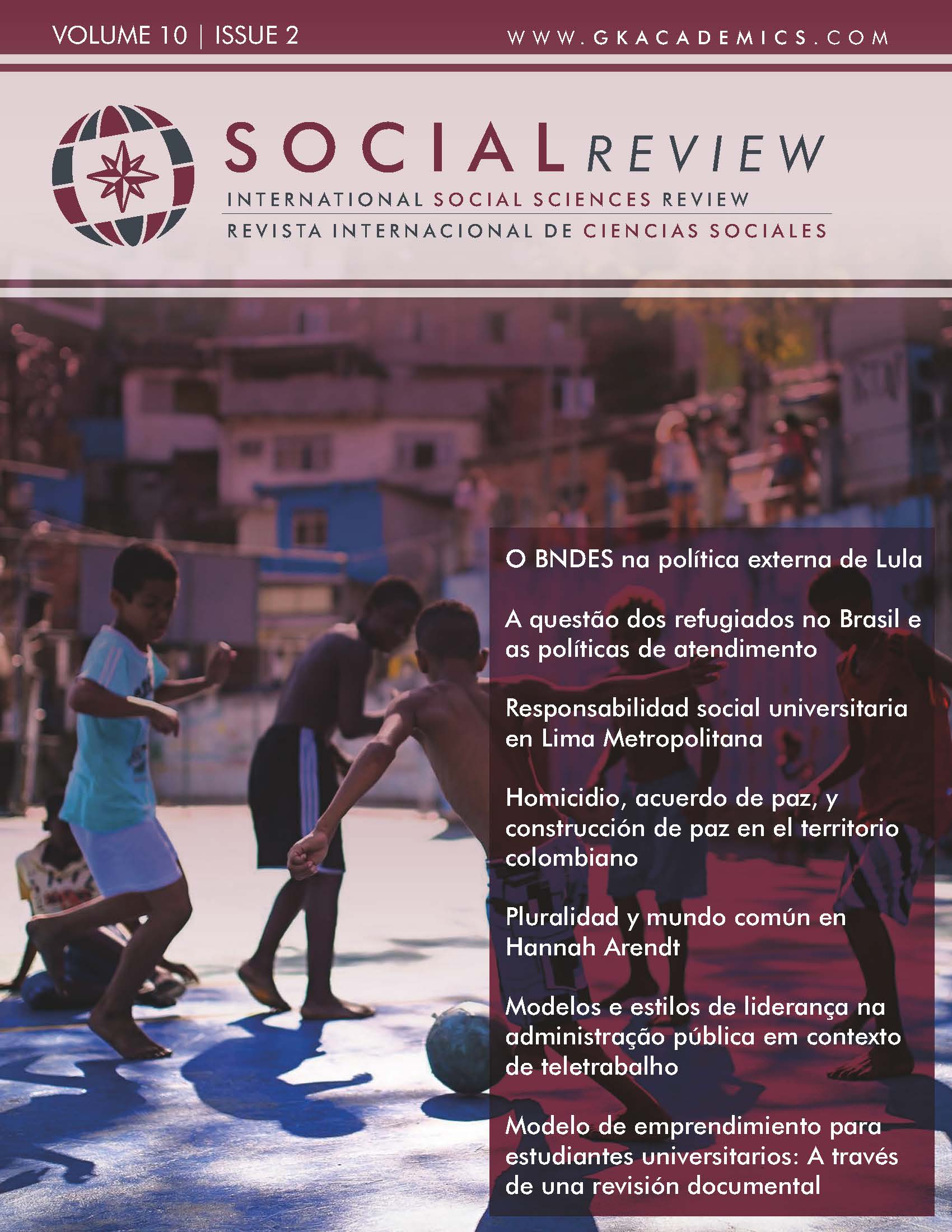Models and leadership styles in public administration in the context of telework
DOI:
https://doi.org/10.37467/gka-revsocial.v10.2636Keywords:
Leadership, Telework, Public Administration, PortugalAbstract
The main goal of this research is to analyse the leadership model or style that can be more effective in the context of teleworking in public administration. Thus, the research question is which leadership model or style is the most appropriate for public administration in a teleworking program. The methodology used was qualitative based on a literature review and the results show that transformational, servant, situational and democratic leadership with active gender representation, is the most effective way to implement teleworking programs in Public Administration.
Downloads
Global Statistics ℹ️
|
1422
Views
|
650
Downloads
|
|
2072
Total
|
|
References
Bae, K., Lee, D. y Sohn, H. (2019). How to increase participation in telework programs in U.S. Federal Agencies: examining the effects of being a female supervisor, supportive leadership, and diversity management. Public personnel management, 48(4), 565-583. DOI: https://doi.org/10.1177/0091026019832920
Dahlstrom, T. (2013). Telecommuting and leadership style. Public Personnel Management, 42(3), 438-451. DOI: https://doi.org/10.1177/0091026013495731
Eikenberry, K. y Turmel, W. (2018). The long-distance leader: rules for remarkable remote leadership. Berrett-Koehler Publishers.
Gibson, J. et al. (2002). Telecommuting in the 21th century: benefits, issues, and a leadership model which will work. The journal of leadership studies, 8(4), 75-86. DOI: https://doi.org/10.1177/107179190200800407
Glyn M. y Dejordy, R. (2010). Leadership through an organization behavior lens. Handbook of leadership: theory and practice. Harvard Business Press.
Goleman, D. (2000). Leadership that gets results. Harvard business review, 78(2), 4-17.
Goleman, D. (2005). Emotional intelligence. Bantam Dell.
Kelley, E. y Kelloway, K. (2012). Context matters: testing a model of remote leadership. Journal of leadership & organizational studies, 19(4), 437–449. DOI: https://doi.org/10.1177/1548051812454173
Kwon, M. y Jeon S. (2018). Do leadership commitment and performance-oriented culture matter for federal teleworker satisfaction with telework programs? Review of public personnel administration, 40(1), 36–55. DOI: https://doi.org/10.1177/0734371X18776049
Mahler, J. (2012). The telework divide: managerial and personnel challenges of telework. Review of public personnel administration, 32(4). 407-418. DOI: https://doi.org/10.1177/0734371X12458127
McPheat, S. (2010). Leadership skills. MDT Training & Ventus Publishing.
Moussa, M., McMurray, A. y Muenjohn, N. (2018). Innovation and leadership in public sector organizations. Journal of management research, 10(3), 14-30. DOI: https://doi.org/10.5296/jmr.v10i3.13101
Neufeld, D., Wan, Z. y Fang, Y. (2010). Remote Leadership, Communication Effectiveness and Leader Performance. Group decision & negotiation, 19(3), 227.246. DOI: https://doi.org/10.1007/s10726-008-9142-x
Sacavém, A. et al. (2019). An integrative literature review on leadership models for innovative organizations. Journal of reviews on global economics, 8, 1741-1751.
Saleem, H. (2015). The impact of leadership styles on job satisfaction and mediating role of perceived organizational politics. Procedia: Social and behavioral sciences, 172, 563-569. DOI: https://doi.org/10.1016/j.sbspro.2015.01.403
Van Wart, M. (2003). Public-Sector Leadership Theory: An Assessment. Public administration review, 63(2), 214-228. DOI: https://doi.org/10.1111/1540-6210.00281
Virtanen, P. y Tammeaid, M. (2020). Developing public sector leadership: new rationale, best practices and tools. Springer Nature Switzerland. DOI: https://doi.org/10.1007/978-3-030-42311-7
Downloads
Published
How to Cite
Issue
Section
License
Those authors who publish in this journal accept the following terms:
-
Authors retain copyright.
-
Authors transfer to the journal the right of first publication. The journal also owns the publishing rights.
-
All published contents are governed by an Attribution-NoDerivatives 4.0 International License.
Access the informative version and legal text of the license. By virtue of this, third parties are allowed to use what is published as long as they mention the authorship of the work and the first publication in this journal. If you transform the material, you may not distribute the modified work. -
Authors may make other independent and additional contractual arrangements for non-exclusive distribution of the version of the article published in this journal (e.g., inclusion in an institutional repository or publication in a book) as long as they clearly indicate that the work was first published in this journal.
- Authors are allowed and recommended to publish their work on the Internet (for example on institutional and personal websites), following the publication of, and referencing the journal, as this could lead to constructive exchanges and a more extensive and quick circulation of published works (see The Effect of Open Access).













